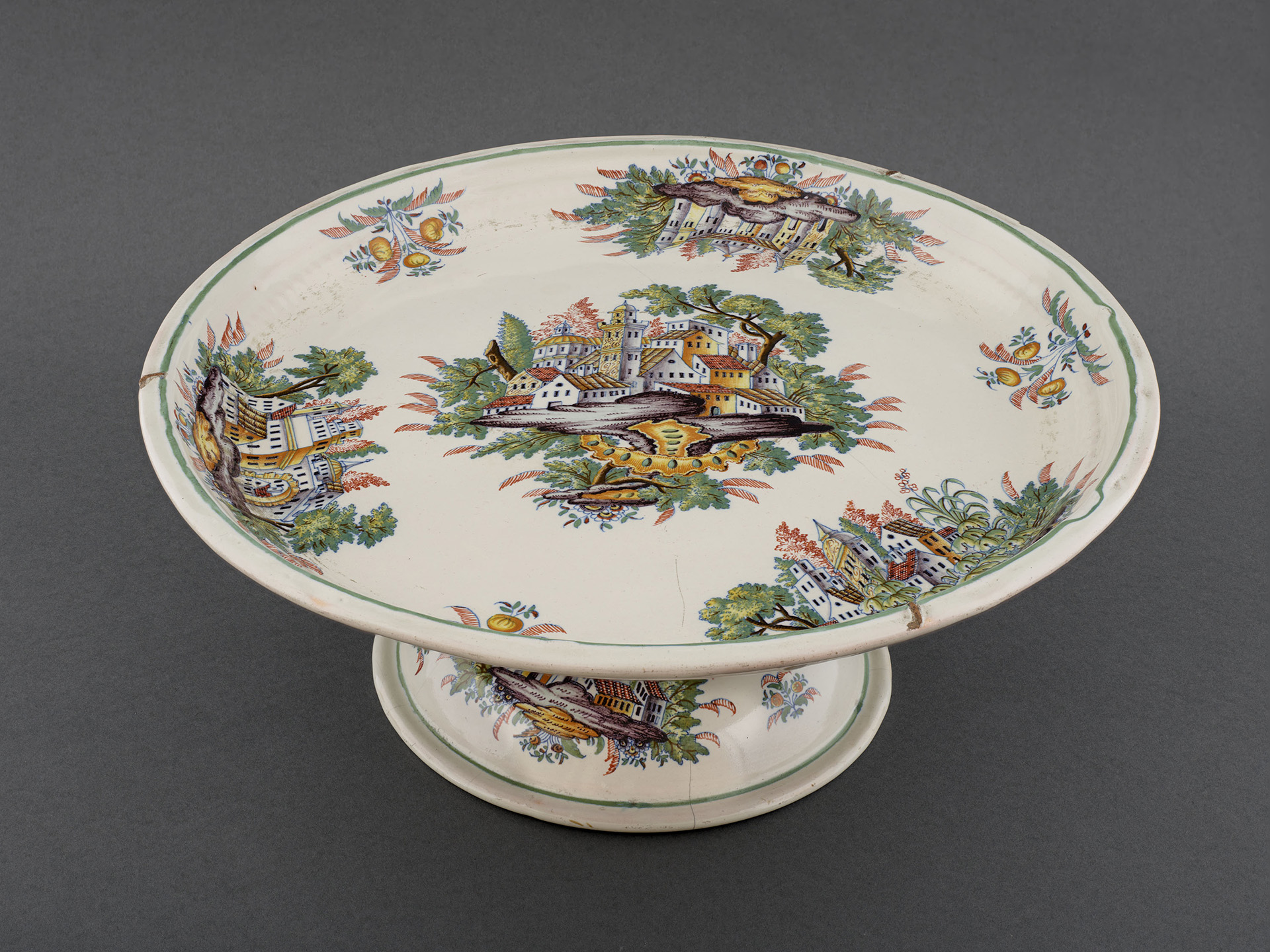
Manufactura de Alcora
Salver
Red-striped series (1740-1760)
WORK INFORMATION
Ceramic, polychrome earthenware, diam. 31 cm
The Alcora manufactory was founded in 1727 by the 9th Count of Aranda on land he owned in what is now the province of Castellón. The aim was to create a luxury earthenware and porcelain factory that would compete with foreign manufactories. Royal privileges, including tax exemption on the export of pieces and the free entry of materials from abroad, allowed this manufactory to operate until the middle of the 19th century despite the fact that it barely made any profits.
Throughout its existence, the factory became a model of organisation and a point of reference in terms of aesthetics thanks to the recruitment of foreign specialists, artists and “secretists” who claimed to know the secret of porcelain manufacture. In addition, the creation of an apprentice academy enabled the manufactory to continue to provide top quality production.
This salver, which is modelled on the designs of the silversmiths and goldsmiths, belongs to the establishment’s second period (1749-1786), which began when Pedro Pablo, son of the 9th Count of Aranda, inherited the factory. The 10th Count was the Spanish ambassador in Paris and was in contact with the Encyclopaedists. His curiosity led him to search for the formula for porcelain, but he only managed to obtain a material that was similar to French soft paste and English pipe clay.
From a stylistic point of view, the salver features ornamental motifs that are characteristic of the red-striped series: groups of houses and buildings flanked by trees and small clusters of fruit. Among the recurring elements that have given this category of pieces their name are the palm-like leaves designed with parallel red strokes. The colours in this series are limited to green, red, ochre and purple.

